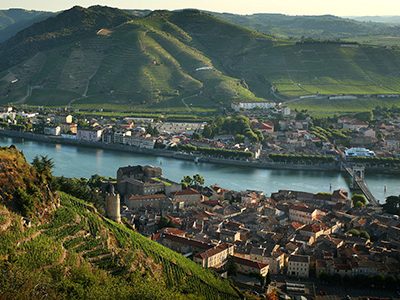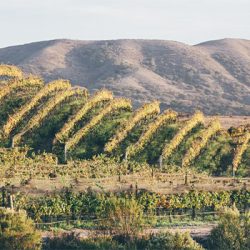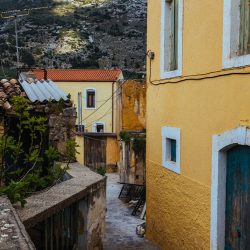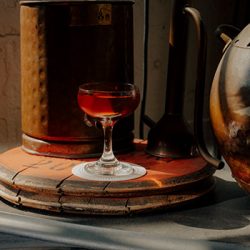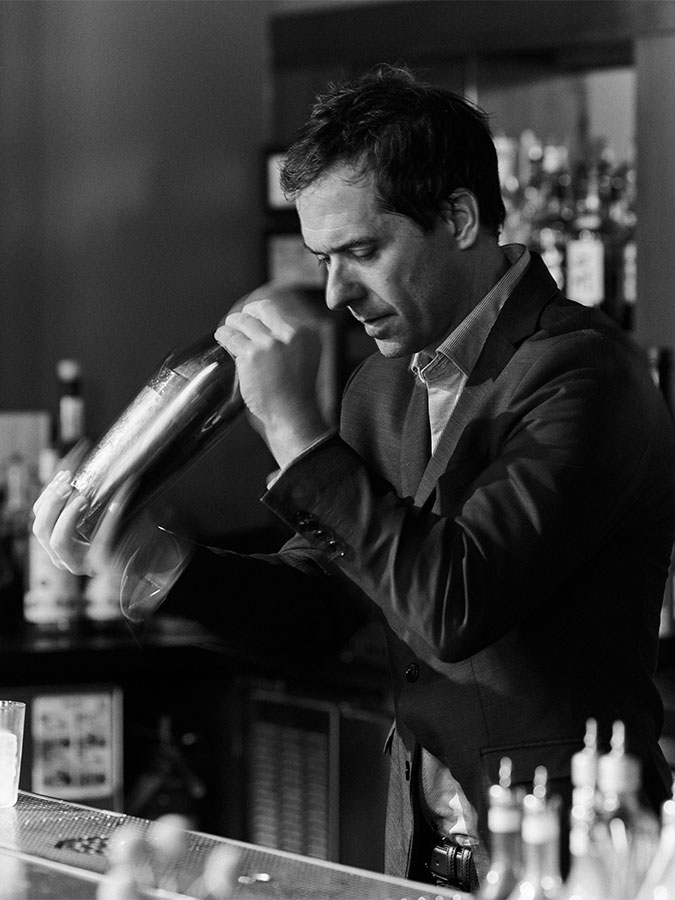

Alcohol-free spirits have been exploding onto the market. There are now 34 non-alcoholic spirit brands available in the United States alone, according to the Adult Non-Alcoholic Beverage Association, which expects the number to grow in the coming years. Restaurants offering tasting menus, from Los Angeles’s Kato and Manzke to Houston’s March, are including options for alcohol-free pairings. Boisson, a non-alcoholic retail store, opened in 2021 and now has five locations in New York and two in California, with plans to expand to Miami.
Boisson’s founder and president, Nick Bodkins, launched the retail chain in the midst of the COVID-19 pandemic. It was a time when many people were reconsidering their drinking habits for health reasons, Bodkins says. Grace Newton, a sales associate at Boisson’s Studio City location, told me that about 80 percent of her clientele drinks alcohol, but they are looking for options that replicate the cocktail experience without the sluggish feeling that often comes with it the next day.
Consumers are turning to non-alcoholic spirits when they want to take a break from drinking for whatever reason, with increasing numbers inspired by public health campaigns like Dry January and Sober October. But do these non-alcoholic spirits really taste like spirits? And can they make satisfying alcohol-free cocktails? With many of them priced between $30 and $40—as much as some traditional spirits (the kind with alcohol)—expectations are high.
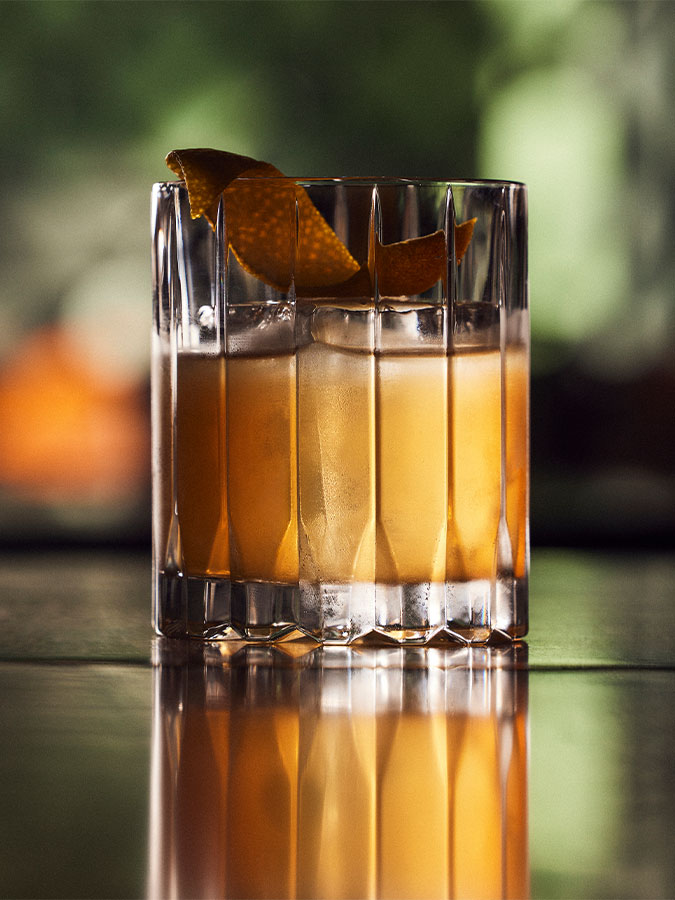

Derek Brown laughed when I called to ask him about non-alcoholic spirits. “The first thing to know is that they don’t contain alcohol,” he tells me. Brown had owned the Washington, D.C., cocktail bar Columbia Room for twelve years before closing its doors in 2022 to move on to new challenges, like non-alcoholic cocktails. His book, Mindful Mixology: A Comprehensive Guide to No- and Low-Alcohol Cocktails, offers recipes, techniques and sources for low-and no-proof drinks. “It seems like such a simple and silly thing to qualify when that’s what you’re buying them for,” he continues. “But it is funny how when people drink them—they expect them to taste like alcohol. They can’t. Alcohol is like a magic molecule. We don’t have a perfect replica of that.”
Brown identifies four sensory components to a successful cocktail: texture, piquancy, length and intensity of flavor. Texture, or weight and body, tends to be one of the biggest challenges that non-alcoholic spirits face. This is because they are hydrosols—water-based distillates, rather than ethanol-based. The second flashpoint is piquancy, or bite. Alcohol has a burn that often causes you to slow down as you drink it. That burn is what separates a cocktail from a juice or an iced tea. Brown describes the third factor, length, as “the amount of space that alcohol takes up that’s not juice or sugar.” Intensity of flavor is the fourth component. Alcohol tends to be a great solvent, so when flavor agents are added to it, like botanicals in gin, it extracts their flavors and holds onto them, something water doesn’t tend to do as well. “When you’re using the non-alcoholic spirits,” Brown said, “you have to think about how you might make up for some of those shortcomings.”
“I’ll give you an example of a cocktail that is a way to add all of those qualities,” Brown said. “It starts out its life as a lemonade, right? It’s just lemon. And then I add a ginger syrup, which gives that gentle burn. And that’s the piquancy. Then, I add salt tincture, which does a surprising thing in that it adds texture but also reduces bitterness, while still allowing for intense flavors. Sometimes it feels more round or sweet because of the salt, which seems contradictory. But it’s because the salt suppresses bitterness and bitterness suppresses sweetness. And then I use aquafaba (chickpea water), but egg whites are the same basic idea—it’s adding texture. Then I also add a spoonful of apple cider vinegar to this drink—the great thing about vinegar is that it’s a byproduct of alcohol. It already has some of the funky esters and flavors that we expect from alcohol. Just a spoonful is enough.”
Brown calls this mixture of fresh lemon juice, ginger syrup, salt tincture, aquafaba and apple cider vinegar the Pinch Hitter. He also suggests adding non-alcoholic spirits, like Spiritless Kentucky 74 as a whiskey alternative in a Whiskey Sour, or Caleño Dark & Spicy as a rum alternative in a tropical Tiki drink.
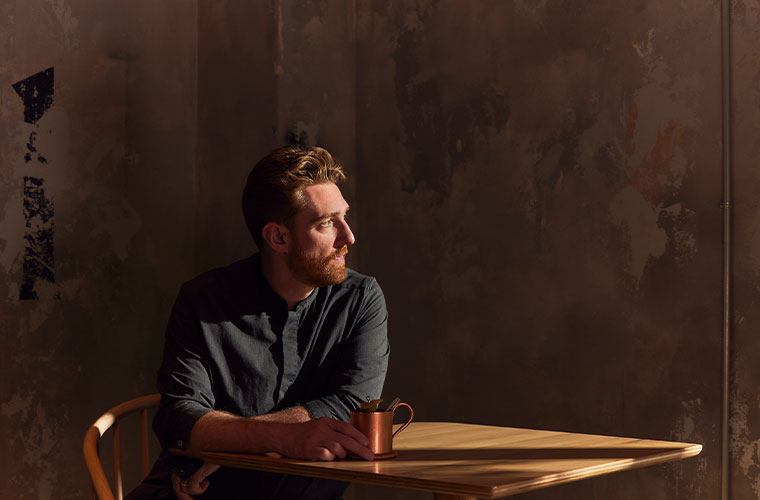

Austin Hennelly is the Bar Director at Kato, a Taiwanese restaurant in Los Angeles’s Arts District where he offers a non-alcoholic pairing with the tasting menu. Hennelly often uses non-alcoholic wine in his pairing, particularly de-alcoholized wines from Johannes Leitz, in Germany’s Rheingau. Leitz uses a process called vacuum distillation, a method of heating wine just enough (to about 95° F) within a vacuum, so that, as the alcohol separates from the liquid, the vapors can be removed, leaving the wine alcohol-free. “They’re evaporating alcohol at a much lower temperature. So, all the textural components and flavors remain pretty much intact,”Hennelly says. Leitz makes a non-alcoholic sparkling riesling called Eins-Zwei-Zero, and Hennelly finds that its bubbles make up for that textural component lacking in a lot of non-alcoholic wines.
Hennelly also uses the Leitz de-alcoholized riesling to pair with Kato’s fish course. Since he finds the wine too thin on its own, he makes up for the lack of body by steeping kombu (dried kelp) in the wine. “Kombu gives off this gelatinous-like substance once it gets wet,” he says, “and that byproduct, in addition to adding some salinity and minerality, serves to enhance and bolster the texture of the wine. We also add in some peach leaves as seasoning which enhances the stone fruit and gives it a little bit of an aroma of marzipan.”


Shawn Lickliter runs the bar programs at République, Manzke and Bicyclette, Chef Walter Manzke’s trio of Los Angeles restaurants. Manzke is the newest, seating forty people a night for a ten-course tasting menu, offering both alcoholic and non-alcoholic pairings. Lickliter likes to add weight to non-alcoholic cocktails by creating a whey cordial. “It sounds technical, but making the whey cordial is pretty simple,” he said. “You’re basically just heating up milk on a stove, then adding a little lemon juice to break it. Then, you’re straining it to separate the proteins out. You take that leftover base of whey and add sugar to it just like a simple syrup. Using that will add texture, body. I like to use that for a lot of the syrups that we do at Manzke, because you’re creating texture the same way as you would putting an egg white into a sour.”
March, a Houston restaurant focusing on Mediterranean cuisine, offers a non-alcoholic pairing with their six- or nine-course tasting menu. Bar Director Mark Sayre also likes to use different syrups to build texture in his alcohol-free cocktails. For an agave-based drink, he uses Seedlip Garden 108 and adds weight with Sicilian pistachio syrup. He finds the syrup contributes a nutty, savory texture as well as sweetness. He calls this cocktail Friend of the Physician. “It drinks almost like an Italian cream soda. It’s so rich,” he laughs.
He also loves a salt tincture to balance out sweetness in a non-alcoholic drink. “If you’re salting your chocolate-chip cookie dough, we all know what that does for the cookies,” he says. Sayre uses the same philosophy to balance his cocktails.
John deBary, previously of New York City speakeasy Please Don’t Tell and Momofuku, includes non-alcoholic cocktails in his 1990s-themed cocktail book, Saved by the Bellini. When it comes to the burn—or piquancy—of a drink, he likes to add black or white pepper. “A very common issue with non-alcoholic drinks is that you take two sips and you just crush it—I’m a chugger.” So, to slow people down, he tends to incorporate a lot of bitterness. “I don’t like a lot of non-alcoholic spirits that are reliant on chili extracted to give spice,” he said. “I find that to be a little distracting.”
To deal with the issue of intensity of flavor in non-alcoholic cocktails, deBary thinks about how their structure is different from cocktails with alcohol. “Let’s say you’re making a daiquiri,” he suggests. “You shake it, and the ice melts into water: About a quarter of the volume of the drink is water. If you didn’t have that it would taste too strong, and the acidity would be off-balance. But if you’re making a non-alcoholic cocktail, it’s already pretty watery.” So, deBary likes to add sparkling soda, kombucha or non-alcoholic beer instead of ice to keep that flavor intensity.
If you’re looking forward to Dry January, here are five non-alcoholic cocktail recipes to try at home, from the savory Ginger Old-Fashioned to the sweet Free Your Mind.
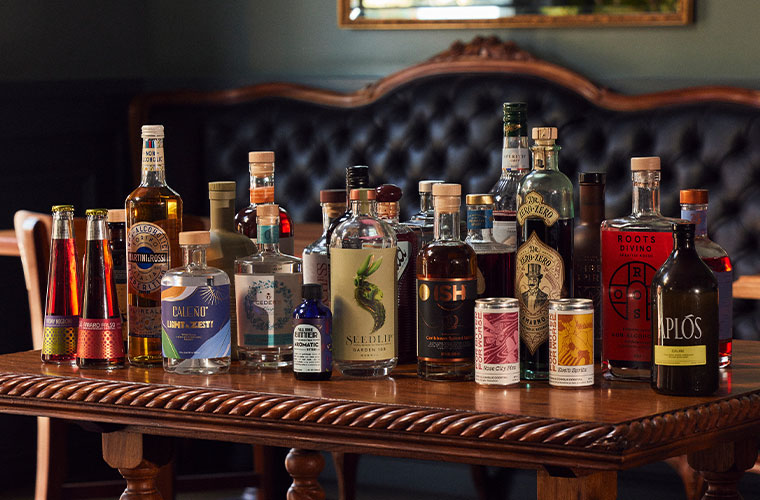

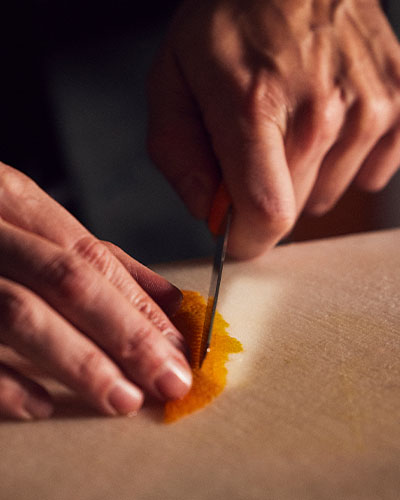

GINGER OLD-FASHIONED
From Derek Brown, author of Mindful Mixology
When it comes to a Bourbon alternative, Brown has found Spiritless Kentucky 74 to be the non-alcoholic spirit that comes closest to the real thing. For this version of an Old-Fashioned, he adds ginger syrup and non-alcoholic bitters for piquancy and intensity of flavor. Garnish the drink with an orange peel, and you almost feel like you’re drinking the real thing.
Ingredients
- 2 1/4 ounces Spiritless Kentucky 74 Bourbon Alternative
- 1/4 ounce ginger syrup (purchase, or use the recipe below)
- 3 dashes All the Bitters Aromatic Bitters
- 1 orange peel
Ginger Syrup
- 2 tablespoons grated ginger root (with skin)*
- 1 cup water
- 1 cup white sugar
- 1 dash lemon juice
- (optinonal few dashes of ginger juice**)
Instructions
For Ginger Old-Fashioned
- Combine all ingredients in a double rocks glass and add one large ice cube. Stir with a bar spoon until chilled.
For Ginger Syrup
- Boil sugar and water until sugar granules dissolve. Remove from heat and add grated ginger. Allow to cool. Add lemon juice and strain.
- *Ginger root is so much easier to grate when frozen.
- **If you prefer a hotter ginger syrup, add a few dashes of freshly squeezed ginger juice before straining.
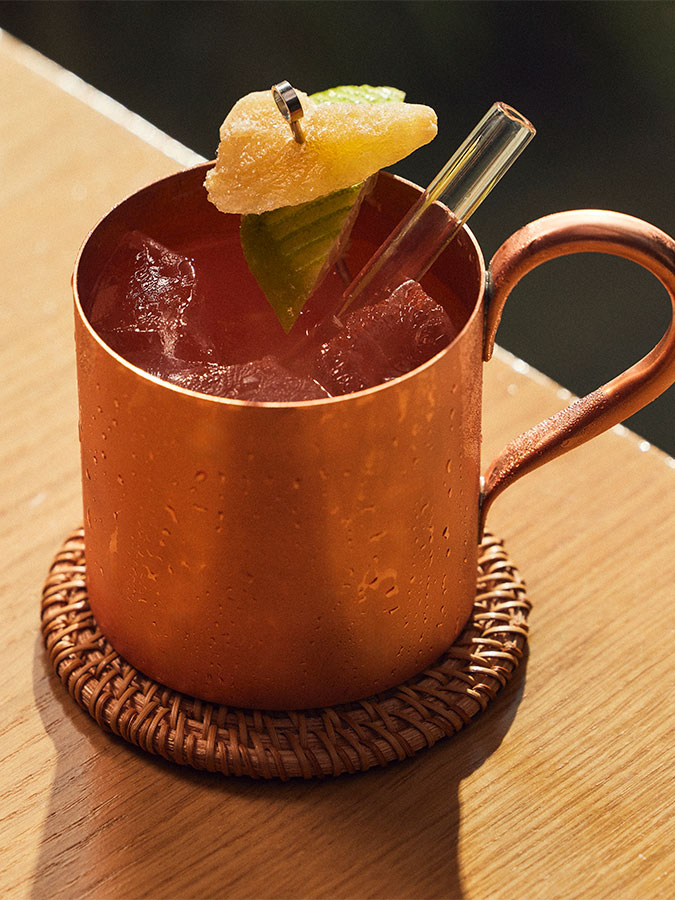

SHISO MULE
From Austin Hennelly of Kato
“It’s very easy to create a delicious vegetarian meal,” Hennelly says. “It’s not very easy to recreate a vegetarian cheesesteak.” He thinks of alcohol-free cocktails the same way. So, instead of trying to replicate a drink and then removing the fundamental ingredient from it, he prefers to create a delicious cocktail from the ground up. For his Shiso Mule, he infuses Amass Riverine with shiso, mint and Thai basil to build complexity and intensity of flavor before adding lime, ginger syrup and ginger beer. Hennelly loves the botanical nature of the infused Amass Riverine; the ginger syrup gives some bite, and the ginger beer brings body and texture.
Ingredients
- 2 tablespoons lime juice
- 5 teaspoons ginger syrup*
- 1 1/3 ounces Herb Amass Riverine**
- 1 1/2 ounces Fever Tree Ginger Beer
Ginger Syrup
- 1 1/2 cups unbleached cane sugar
- 2 1/2 cups fresh pressed ginger juice (skin on)
Herb Amass Riverine
- 1/4 cup shiso
- 1/4 cup picked mint
- 1/4 cup picked Thai basil
- 3 cups Amass Riverine
Instructions
For Shiso Mule
- Measure all ingredients (except ginger beer) into a cocktail tin and fill with ice. Shake hard but briefly to chill and aerate. Add the ginger beer to the tin, fine-strain into a copper mule mug with three or four ice cubes. Garnish with a lime wedge and candied ginger.
For Ginger Syrup
- Add both ingredients to a blender and blend on high until all the sugar is dissolved.
For Herb Amass Riverine
- Blend ingredients on high until all the herbs are completely pulverized. Strain through a chinois and again through a coffee filter.
FRIEND OF THE PHYSICIAN
From Mark Sayre of March
Sayre loves the botanical nature of Seedlip Garden 108, as he finds that “the non-alcoholic spirits that are botanical based—more organic, greener, plant-based spirits—they’re further along and better mixed into cocktails to supplement where the alcohol would stand.” He also likes adding Tenneyson Ginger for its heat. The pistachio syrup adds body while the soda water boosts texture to create a complete, tasty cocktail.
Ingredients
- 1 ounce Seedlip Garden 108
- 1 ounce Tenneyson Ginger
- 1/4 ounce lemon juice
- 3/4 ounces pistachio syrup (Sayre makes his in-house but recommends Monin Pistachio Syrup)
- 1 1/2 ounces lemon-lim soda (LaCroix, not Sprite)
Instructions
- Shake all ingredients on ice and strain onto crushed ice in a Collins glass. Top with Lemon-Lime Soda and garnish with a small bunch of good-looking mint.


STRAWBERRY MARGARITA
From Shawn Lickliter of Manzke
For Lickliter, non-alcoholic aperitivos are the way to go. He especially likes Giffard’s Apertif Syrup for it flavor in cocktails. “If you want to have a spritz, it’s super simple. You just use two ounces of the syrup, top off with club soda, and you’re good to go. It’s actually really tasty.” He also uses it in his take on a strawberry Margarita, muddling strawberries, lime and agave to mix with the syrup.
Ingredients
- 2 ounces Giffard Apertif Syrup
- 1 ounce lime juice
- 1/4 ounce agave syrup
- 1 pinch salt
- 1 orange peel
- 2 strawberries
Instructions
- In a mixing tin, muddle the strawberries with the lime juice. Combine all other ingredients and shake with ice. Double-strain into a rocks glass with ice.
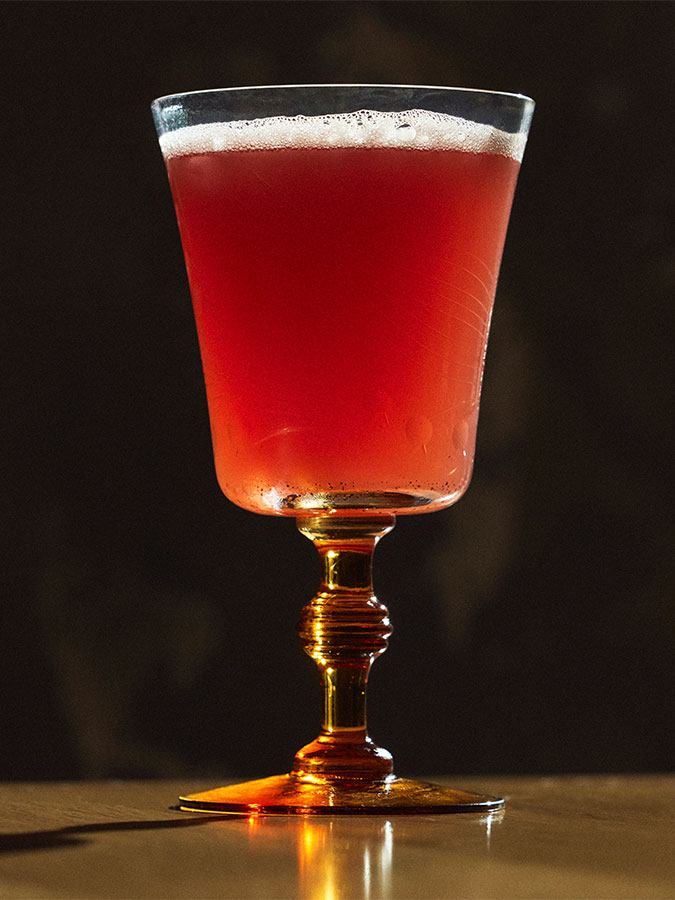

FREE YOUR MIND
From John deBary, author of Saved by the Bellini
deBary doesn’t like to rely on non-alcoholic spirits, sometimes preferring to create interesting flavors and textures on his own. “If you have a more delicate, nuanced flavor profile in whatever you’re making, maybe alcohol is getting in the way. I think finding that space is way more exciting, but it’s also more challenging. It requires a bit more thought and creativity.” deBary likes using Lapsang Souchong tea leaves for their aromatics, which he compares to the smokiness of Scotch whisky. The Luxardo cherries provide sweetness and the tonic water provides a sharp bitterness for acidity and balance.
Ingredients
- 1 tablespoon Lapsang Souchong tea leaves
- 2 tablespoons Luxardo cherries in syrup
- 3 ounces fresh watermelon juice
- 1/2 ounce fresh lemon juice
- 1 1/2 ounces tonic water
Instructions
- In a shaker, combine the tea leaves and cherries and muddle to breakup the cherries. Add the watermelon and lemon juices. Add ice and shake vigorously for 15 seconds. Fine strain into a cocktail coupe. Top with the tonic water to finish.
Based in Los Angeles, California, Alissa Bica is the Associate Editor and Spirits Critic at Wine & Spirits. She is also a sommelier at 71 Above and co-runs the home wine tasting company, Côte Brune and Blonde. In any rare moments of free time, she writes about obscure grape varieties in the blog Off the Beaten Wine Path.
This story appears in the print issue of Winter 2023.
Like what you read? Subscribe today.


